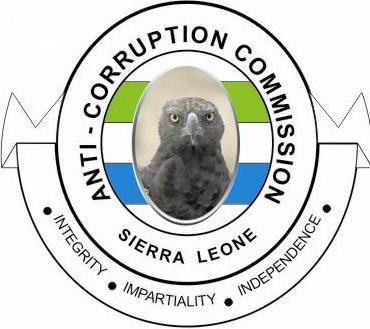By: Alex A. Bah, Public Relations Assistant, ACC
In a nationwide engagement with various Government Ministries, Departments and Agencies (MDAs), the Anti-Corruption Commission (ACC) has enlisted and engaged Heads/Representatives of MDAs in popularization of the contents of Three Corruption Prevention Reports developed by the Prevention Department of the Commission.
These engagements that targeted the Eastern Region - Kono, Kenema and Kailahun on the 23rd, 24th and 25th April, 2024, respectively, at the District Councils Halls, mirrored Systems Review and Monitoring and Compliance Reports of the National Telecommunications Authority (NaTCA), Ministry of Water Resources (MoWR) and the Sierra Leone National Fire Force (SLNFF), with support from the Open Society Initiative for West Africa (OSIWA).
In the nub of statements made by the Team Lead, Sylvanus Blake, Public Relations Officer, ACC detailing the contents of the Reports, stated that the Commission is poised to share the findings, recommendations and performance tracker of the specific institutions as contained in the Reports, as a wakeup call to them and other MDAs on the need to ensure maximum Compliance.
He stated that the crux of the issues in the Reports border on Procurement, Fuel Management, Performance Appraisal, Audit, Revenue Generation and Human Resource.
He disclosed that the Review Report of NaTCA shows that there are a number of issues, with some being positive and a huge chunk of them includes questionable reduction of Licenses which he noted is a primary revenue generation avenue, absence of an Audit Committee and understaffed audit unit, fleet management, stores, financial management and absence of petty cash, budgetary management, human resource, Corporate Governance, among others. "NaTCA presented to our team an audit plan which only contains positive things and audit plan is also a risk management plan that should contain negatives that can be foreseen and plans to respond to them. We also realized that internal audit queries are not respected. So our next Compliance Monitoring will be critical to determine the strong actions we shall take or not" he furthered.
He dilated on the Monitoring Report of MoWR, stating that the institution within 3 months of receipt of the Commission's Systems and Processes Review Recommendations achieved 56% Compliance Rate, by fully implementing 24 out of 43 recommendations. He also stated that the Sierra Leone National Fire Force (SLNFF), on the other hand achieved 75% Compliance Rate.
"Our rating starts from 0- 49% which is a No Compliance and we will issue an indictment; from 50%-79% is a moderate compliance and it attracts a warning letter; from 80% - 90% is a Significant Compliance and we will further engage the institution, and beyond that is Significant Compliance", he stated.
Mr. Blake commended the SLNFF, but he said they are in the same category nonetheless with MoWR. He however maintained that out of the recommendations, the Commission is cognizant of the Non-applicable ones that are mostly concerned with other institutions like the Ministry of Finance.
He ended by reminding them to ensure they declare their Income, Assets and Liabilities, emphasizing on the importance and the punitive sanctions for defaulters.
Speaking on the roles and functions of the Prevention Department, Senior Public Education Officer, Christiana Jusu stated that the Prevention Department is at the core of the work of the Commission, and it exclusively works with MDAs, to identify system deficiencies, and proffer recommendations for best practices to maximize performance. This she said,is done by conducting Systems Reviews, provide recommendations, implements effective monitoring and also conduct ethics and integrity trainings. The Commission under its current leadership, puts premiumon Prevention, she averred.
The meetings were chaired in Kono by the Regional Manager, Hawanatu Omotayo Kamara, in Kenema by the Senior Public Education Officer, Edward Blake, and in Kailahun by the Public Relations Assistant, Alex A. Bah, who also established the purpose of the meetings at its various locations.
An interactive questions and answers sessions, climaxed the engagements.




